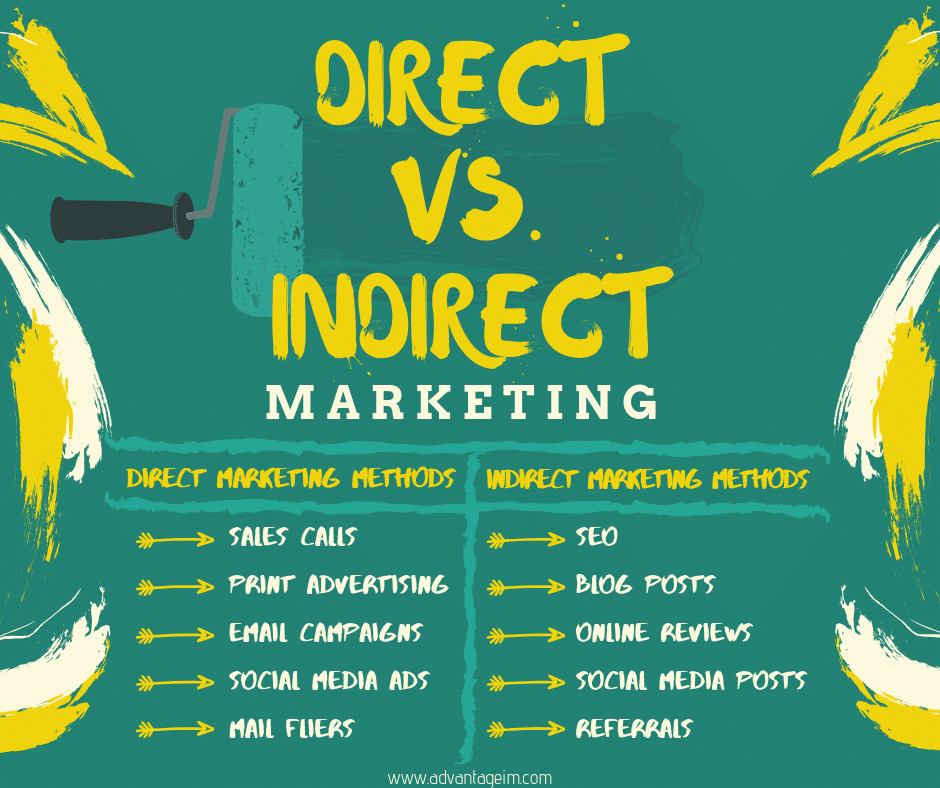
You may not realise it, but all marketing efforts can be categorised in one of two ways - direct marketing or indirect marketing. On the surface, direct vs. indirect marketing is relatively easy to understand. Direct marketing involves engaging with leads or customers directly. For example, sending a customer an email that contains a promotional offer. Indirect marketing is a strategy in which you put yourself in a position to be found by leads. Consequently, allowing them to engage with you instead of just directly engaging them. For example, writing a post on your website's blog. Which leads can find through external links or through a search engine, is a form of indirect marketing.
Both direct marketing and indirect marketing can be effective strategies. However, to make sure that you implement them effectively, it's paramount that you not only understand what the advantages of using each are, but also what the potential disadvantage are of direct vs. indirect marketing.
Direct Marketing
Direct marketing includes a number of traditional marketing strategies that everyone is familiar with. For example TV commercials are a form of direct marketing. So are billboards, magazine ads, radio ads, and telemarketing. That;s not to say that digital marketing can;t be direct. For example, email marketing and PPC advertising are also forms of direct marketing. You're essentially trying to find and address a specific audience - and you're trying to get them to take action right away.
Advantages:
- You can identify specific audience segments, thereby allowing you to connect with people who are likely interested in your product or service already. For example, if you run a TV commercial, you can choose a time slot on a channel that you know your audience is watching.
- If you know the audience you're addressing, then you can personalise your messages, thereby allowing you to nurture leads and build stronger relationships. For example, using the data you have to segment your email list allows you to send more relevant content to your recipients.
- The data you collect from your direct marketing efforts is more measurable. For example, you can track your email response rate to determine how effective your direct marketing strategy is and to make adjustments accordingly.
While there are plenty of advantages to implementing certain direct marketing techniques, there are some potential drawbacks as well. These can include the following:
Disadvantages:
- If you're too overzealous, your direct marketing efforts may cross privacy boundaries and may even come off as spam, which will hurt your brand reputation.
- You have to have an understanding of who your audience is and where you can find them. Otherwise, you may be advertising to people who aren't interested in your brand, which is a waste of time and money.
- Your overall reach won't be as widespread since direct marketing requires you to focus in on a specific audience to be effective.
Indirect Marketing
Indirect marketing is essentially marketing in which you're not trying to sell a specific product or service. For example, content creation in the form of a blog of email newsletter are forms of indirect marketing. A lot of social media marketing is indirect as well. For example, if you're simply engaging in discussions or posting links to informative articles. The idea behind indirect marketing is that you're nurturing relationships, building brand authority, and generating brand awareness. The following are some of the advantages of indirect marketing:
Advantages:
- You provide value to your customers without coming off as self-serving, which helps to build your brand reputation and increase brand trust.
- Indirect marketing is typically much less expensive than direct marketing.
- Indirect marketing is a long-term strategy, which means that your efforts will continue to have an impact throughout the future, For example, you might write a blog post that someone reads years later.
As beneficial as indirect marketing is, there are a couple of disadvantages when compared to direct marketing. These disadvantages include the following:
- Tracking performance is more difficult. This is because you're not honing in on specific customers - you're casting a wider net.
- Indirect marketing efforts may not have instant impact - it may take some time before they begin drawing in new customers. As such, it can be frustrating not to see an immediate impact on sales.
- Because it's a long-term strategy, indirect marketing requires constant attention. Whereas direct marketing tactics can work on their own, indirect marketing functions as a whole. This means that you need to be constantly working at it. There's basically no end in sight.
As you can see, when it comes to direct vs indirect marketing, both have their share of advantages and disadvantages. Instead of choosing one over the other, the best course of action is to use a combination of both. This will allow you to see both short-term and long-term results, especially if you're careful when it comes to avoiding potential drawbacks that both strategies can present when used improperly.


